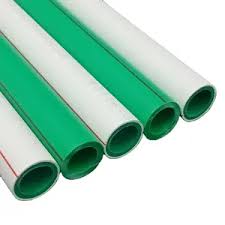Dec . 15, 2024 05:28 Back to list
Current Pricing Trends for HDPE Pipe Products in the Market
Understanding HDPE Pipe Pricing Factors and Trends
High-Density Polyethylene (HDPE) pipes have garnered significant attention in various industries due to their versatility, durability, and cost-effectiveness. As the demand for sustainable and robust piping solutions continues to rise, understanding the pricing mechanism of HDPE pipes becomes essential for decision-makers in construction, agriculture, and utility sectors. This article delves into the factors affecting HDPE pipe pricing and current market trends.
What is HDPE?
HDPE, or High-Density Polyethylene, is a thermoplastic polymer known for its high strength-to-density ratio. It offers excellent chemical resistance, flexibility, and longevity, making it an ideal choice for water distribution, sewer systems, and oil and gas pipelines, among other applications. The benefits of HDPE pipes include lower installation costs due to their lightweight nature, reduced maintenance costs, and extended lifespan compared to conventional materials.
Key Factors Influencing HDPE Pipe Prices
1. Raw Material Costs The primary factor affecting the price of HDPE pipes is the cost of raw materials. HDPE is derived from petroleum; thus, fluctuations in oil prices can directly impact the cost of HDPE production. As global oil markets experience volatility, manufacturers may pass these costs onto consumers.
2. Manufacturing Processes The production process for HDPE pipes involves advanced technology and machinery, including extrusion and injection molding techniques. Innovations in manufacturing can lead to efficiencies that lower prices, while outdated equipment may increase production costs.
3. Market Demand The construction and municipal sectors are the primary consumers of HDPE pipes. A surge in construction activities or infrastructure projects significantly increases demand, impacting prices. For instance, government initiatives to upgrade water supply systems often lead to higher purchases of HDPE pipes, driving up market prices.
4. Regulatory Standards Compliance with environmental regulations and safety standards can influence costs. Manufacturers often need to invest in technology and processes to meet these requirements, which may be reflected in the pricing of their products.
5. Geographical Factors The region also plays a crucial role in determining HDPE pipe prices. Transportation costs, local demand, and availability of raw materials can vary, leading to regional price discrepancies. For instance, areas closer to manufacturing plants may see lower prices due to reduced shipping costs.
hdpe pipe price product

6. Quantity and Specifications The size and specifications of the HDPE pipes required can greatly affect pricing. Larger diameter pipes or those with special features (such as pressure ratings or custom lengths) tend to be more expensive. Bulk purchasing often results in lower per-unit costs, incentivizing larger orders.
Current Market Trends
As of 2023, several trends are shaping the HDPE pipe market.
1. Sustainable Practices With a growing emphasis on sustainability, the construction industry is shifting towards eco-friendly materials. HDPE pipes are recyclable and have a lower environmental impact compared to traditional alternatives, making them increasingly popular.
2. Technological Advances The introduction of new manufacturing technologies is enhancing production efficiency and reducing costs. Companies investing in automation and innovative production methods can offer competitive pricing while maintaining quality.
3. Global Supply Chain Issues Recent global events have disrupted supply chains, leading to shortages and increased prices for HDPE pipes. Manufacturers are now focused on diversifying their supply sources to mitigate these risks and stabilize costs in the future.
4. Infrastructure Investment Governments around the world are investing heavily in infrastructure projects, particularly in developing regions. This investment is expected to sustain demand for HDPE pipes, further influencing prices upward.
5. Market Consolidation The HDPE pipe market has witnessed a trend toward mergers and acquisitions, as companies seek to expand their market share and leverage economies of scale. This consolidation can impact pricing strategies and product availability.
Conclusion
In summary, the pricing of HDPE pipes is influenced by a myriad of factors, including raw material costs, manufacturing processes, market demand, regulatory requirements, and geographical considerations. As sustainable practices gain traction and technological advancements continue to unfold, the HDPE pipe market is experiencing dynamic changes. Industry stakeholders must stay informed about these factors to make strategic purchasing decisions and navigate the complexities of HDPE pipe pricing effectively. Whether for large infrastructure projects or smaller installations, understanding these elements will contribute to better financial planning and operational efficiency in construction and utility management.
-
High-Quality PVC Borehole Pipes Durable & Versatile Pipe Solutions
NewsJul.08,2025
-
High-Quality PVC Perforated Pipes for Efficient Drainage Leading Manufacturers & Factories
NewsJul.08,2025
-
High-Quality PVC Borehole Pipes Durable Pipe Solutions by Leading Manufacturer
NewsJul.08,2025
-
High-Quality PVC Borehole Pipes Reliable PVC Pipe Manufacturer Solutions
NewsJul.07,2025
-
High-Quality UPVC Drain Pipes Durable HDPE & Drain Pipe Solutions
NewsJul.07,2025
-
High-Quality Conduit Pipes & HDPE Conduit Fittings Manufacturer Reliable Factory Supply
NewsJul.06,2025

